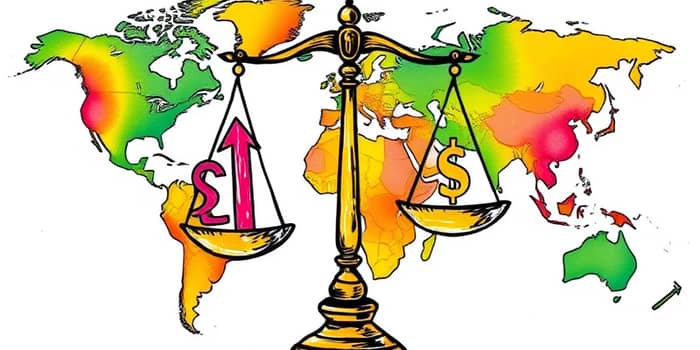
As economies rebound from pandemic-era shocks, inflation dynamics are reshaping global markets. This article examines the latest data, forecasts for 2025 and beyond, and practical strategies for investors, businesses, and policymakers to adapt.
Global inflation is projected to average 4.0% in 2025, slightly above the 3.9% estimate for 2024. Long-term forecasts suggest a gradual easing to 3.9% by 2026 and 3.8% by 2028, signaling a pause in the downward trend seen in recent years. However, these figures mask regional divergences and sectoral pressures that could prolong higher prices.
In advanced economies, the U.S. headline CPI fell to 2.3% in April 2025, the lowest since early 2021. Core inflation, excluding volatile food and energy components, remains at 2.8%, the softest pace in over three years. Economists caution that renewed trade tensions and sustained tariffs could push U.S. inflation back toward 3% by year-end and possibly above 4% by mid-2026.
Emerging markets face even stiffer pressures, with average CPI expected to exceed 5% in 2025. Currency volatility, food and energy weightings, and less credible monetary frameworks contribute to sustained price gains. Conversely, many European countries anticipate moderated inflation slightly above 2%, driven by energy market transitions and fiscal policy support.
Several factors are converging to keep inflation elevated. While supply chain bottlenecks have largely eased, persistent protectionist measures and higher tariffs are transmitting cost increases to consumers. Robust wage gains in tight labor markets are feeding into service-sector price rises, while mixed trends in energy and commodity markets provide uneven relief.
Each driver interacts with the others, creating a complex web of influences that central banks and businesses must navigate carefully.
Inflationary pressures manifest differently across regions, reflecting local policy choices, energy dependencies, and labor market conditions. For global investors, understanding these nuances is crucial for portfolio positioning.
In Europe, the pivot to renewable energy and ongoing natural gas price volatility mean inflation may remain stubbornly above central bank targets. Emerging markets, meanwhile, must contend with currency depreciation risks and high food price sensitivities, which can exacerbate social and political tensions.
Higher sustained inflation alters the investment landscape and challenges policymakers. Equity and bond markets are pricing in the potential for more aggressive central bank tightening or delayed rate cuts, increasing volatility in interest-rate sensitive sectors such as real estate and consumer discretionary.
Proactive risk management and scenario analysis are essential. Firms and investors should stress-test portfolios against a range of inflation outcomes, incorporating potential trade policy escalations and energy price shocks.
Stakeholders can adopt several practical measures to navigate this environment. From tightening expense controls to recalibrating wage negotiations, success depends on foresight and agility.
For businesses, engaging in long-term supplier partnerships and securing price escalators can mitigate input cost volatility. Investors should consider duration-reducing strategies in bond portfolios and overweight sectors with pricing power, such as utilities and consumer staples.
Policymakers must communicate policy intent clearly to anchor inflation expectations. Maintaining credible anti-inflation frameworks, combined with targeted support for vulnerable households, can prevent inflation becoming self-fulfilling.
The inflation outlook remains fragile and contingent on geopolitical developments, energy market shifts, and central bank resolve. While headline rates may slowly subside, underlying pressures—from tariffs to wage growth—are likely to keep inflation above historical norms for some time.
Investors and policymakers who embrace flexibility, rigorous data analysis, and effective communication will be best positioned to thrive in this new inflationary regime. By understanding key drivers and regional nuances, market participants can transform inflationary challenges into opportunities for growth and resilience.
References













